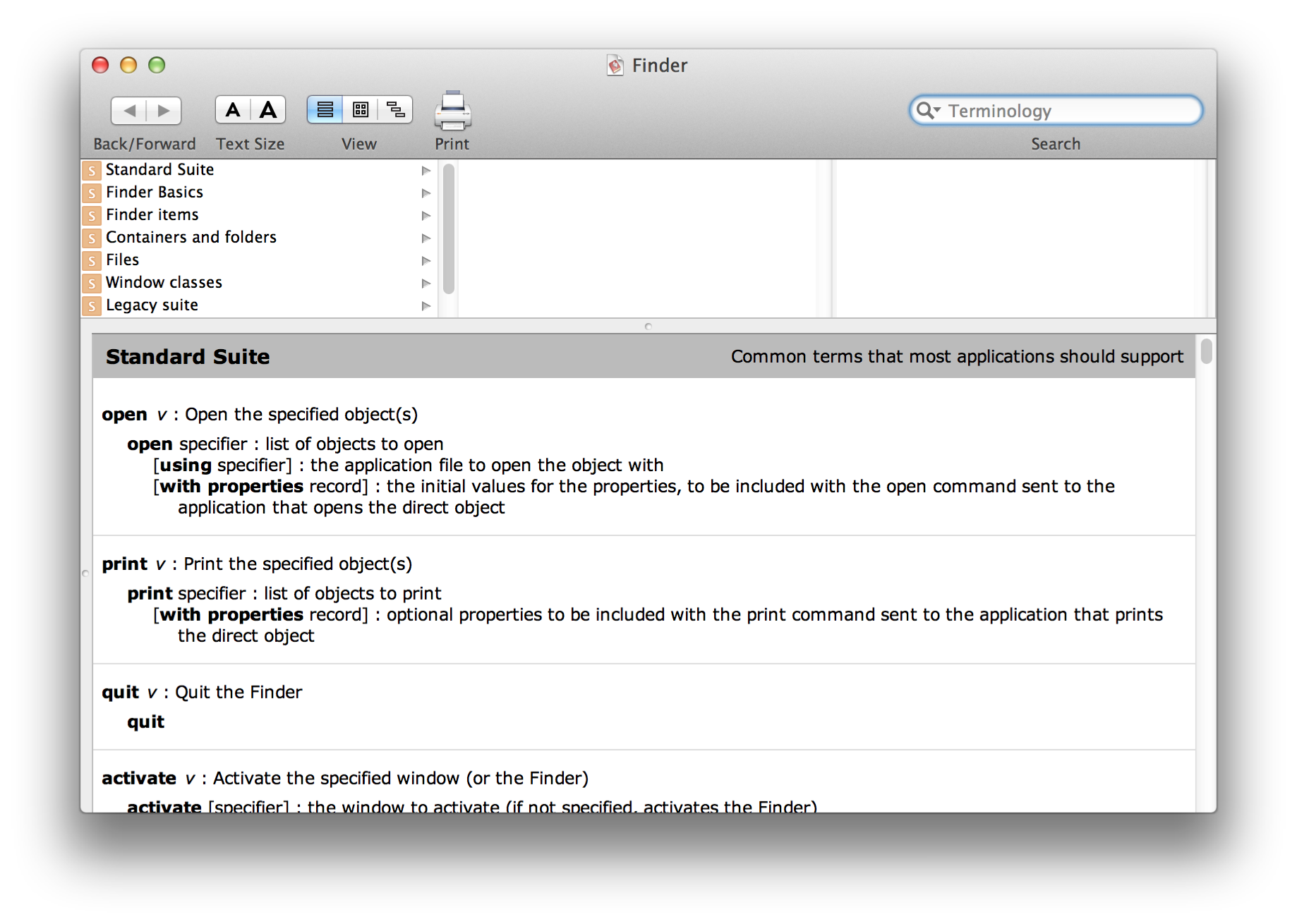

- #Applescript word for mac 2007 recording mac os
- #Applescript word for mac 2007 recording driver
- #Applescript word for mac 2007 recording software
- #Applescript word for mac 2007 recording license
- #Applescript word for mac 2007 recording windows
The new name was given for a more market-friendly approach and to license the platform.
#Applescript word for mac 2007 recording mac os
In 1997, Apple gave birth to Mac OS 7.6, which was basically the 7.6 version of Software. Aliases, a feature similar to shortcuts.The Trash was redesigned to preserve deleted files after a system reboot, while the Empty Trash command was implemented.32-bit QuickDraw – with support for “true color” imaging.AppleScript – a scripting language for automating tasks.Apple menu was made more general-purposed.Alongside these improvements, a wide range of new features were introduced:
#Applescript word for mac 2007 recording windows
The version suffered 5 note-worthy modifications, in which Apple revamped the user interface to compete with the newly-rising Microsoft Windows and to prepare itself for the Internet. System 7 was also the last major overhaul before Apple chose to market its desktop platform as Mac OS. Multitasking was introduced only in System 5 and until System 7, in 1991, Apple only worked on the internal compatibility suite and tried to get AppleTalk working. In the next three years Apple reinvented itself with version 2, 3 and 4, which introduced some pretty-basic features as a Shut Down command, support for more evolved hardware and more drivers.
#Applescript word for mac 2007 recording driver
The System also had a Finder application used for file management and a driver to communicate with the printer. Apple broke the ice by introducing the first desktop system which was based on a graphical user interface and not on a dull command line, such as the one used by MS-Dos.
#Applescript word for mac 2007 recording software
It all began with Apple’s first Macintosh personal computer, the 128K model, which was powered by System Software 1.0 or System 1, as most people knew it back then. Related Read: Evolution of Windows OS – Past & Future Apple’s first steps
Although the founder of the company passed through some harsh times before Apple become what it is today, Steve Job’s marks can be seen in each and every version until its passing, and hopefully, even after. Today, we embark ourselves on a brief journey, to remind ourselves how the Mac OS has evolved through the years.Īs Steve Jobs himself stated, Apple’s desktop platform was created by borrowing concepts already available in nature and in the human world, all set to be presented with a nice stylish touch for the end user.

Have questions or feedback about Office VBA or this documentation? Please see Office VBA support and feedback for guidance about the ways you can receive support and provide feedback.Apple’s desktop platform has a history to be proud of and starting with 1984, almost 30 years ago, the Cupertino-based company has produced a stable system which later evolved into Mac OS, and then the renowned X.Īlthough the road was quite bumpy, Apple managed to evolve a pretty standard platform into something which inspired other companies as well, including Microsoft and its Windows family. Announcing add-in support for Gmail accounts in Mac Outlook.IdMSOs compatible with Office 2016 for Macįor information about the idMSOs that are compatible with Office 2016 for Mac, see the following: Office 2016 for Mac doesn't support third-party COM add-ins. Support for COM add-ins that use custom ribbon controls For commands that are compatible with Office 2016 for Mac, see idMSOs compatible with Office 2016 for Mac. Most familiar Office Fluent Control Identifiers are compatible with Office for Mac. Ribbon customization featureĪbility to customize the ribbon using Ribbon XMLĪbility to invoke Macros using custom ribbon controlsĪbility to include and invoke Office Fluent Controls within a custom ribbon tab Note that there are some differences in ribbon support in Office 2016 for Mac and Office for Windows. Office 2016 for Mac supports ribbon customization using Ribbon XML. IFDEF between different Mac Office versions at compile time. Request a user's permission to access multiple files at once.Ĭall external AppleScript scripts from VB. The following VBA commands are new and unique to Office 2016 for Mac. Creating an installer or putting user contentįor instructions on creating an installer for your add-in, please refer to the article here: Installing User Content in Office 2016 for Mac New VBA commands for Office 2016 for Mac You can minimize the effects of sandboxing by using the new commands described in the following section. This affects any add-ins or macros that involve file access or communication across processes. Sandboxing restricts the apps from accessing resources outside the app container. Unlike other versions of Office apps that support VBA, Office 2016 for Mac apps are sandboxed. Outlook for Mac and OneNote for Mac do not support VBA.


 0 kommentar(er)
0 kommentar(er)
